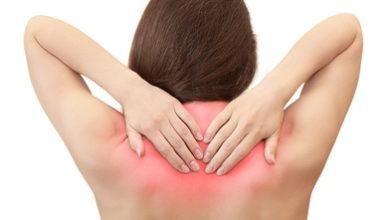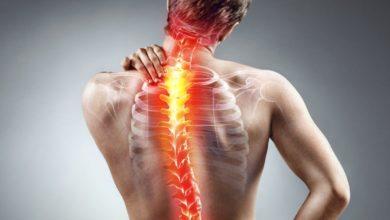Muscle pain origins, symptoms, and treatment

How does muscle pain feel?
Myalgia, or muscle pain, is a symptom of an accident, infection, disease, or other health problem. You may have a persistent, profound ache or a series of strong pains. Some people have muscle soreness throughout their bodies, while others only in certain areas. Everyone reacts differently to muscle pain Read more Article Belt.
Who is most prone to experience muscle pain?
Muscle discomfort can affect everyone, regardless of age or gender. When you try something new or change up your workout routine, you may experience delayed-onset muscle soreness (DOMS) (DOMS). Your muscles may begin to hurt six to twelve hours after working out, and the pain may last up to 48 hours. You will experience pain while your muscles heal and grow stronger. Pain o Soma 500mg is a muscle relaxant that relieves muscle pain quickly.
What else can happen besides muscle soreness?
In addition to muscle soreness, you may experience joint pain or muscle spasms. Cramps in the muscles.
What causes muscle pain?
Muscle pain can be caused by a variety of circumstances, including:
- Autoimmune illnesses.
- Injuries;
- Neuromuscular issues.
What are the various types of autoimmune diseases that might cause muscle pain?
An autoimmune condition occurs when the body’s immune system attacks itself. A strong immune system keeps you healthy and helps you fight infections.
Inflammatory myopathies, such as inclusion body myositis and polymyositis (MS), are examples of autoimmune diseases that cause muscle pain (MS).
What are some of the different infections that can cause muscle pain?
Bacterial and viral infections can cause pain and suffering throughout the body. You may also have a temperature and feel ill, depending on the cause. Your lymph nodes may also swell.
Colds and flu, Lyme disease, and Rocky Mountain spotted fever (infections shared through tick bites) can all cause muscle aches (infections spread through tick bites).
- Trichomoniasis and malaria (infections transmitted by food) (a foodborne illness).
What types of injuries might cause muscle damage?
Overuse soreness occurs when you repeatedly use the same muscles at work or during exercise.
- One type of injury that might trigger painful muscles is an abdominal strain.
- Low back sprains and strains.
- Shattered bones and other serious injuries.
- Myofascial pain syndrome (overuse) is caused by repetitive movements (overuse).
What medications cause muscle pain?
Some medications and therapies may cause discomfort, either temporarily or permanently. Some medications cause inflammation (myositis) around muscle cells or activate pain receptors in the muscles. Among these treatments are cancer therapies such as chemotherapy and radiation therapy.
- ACE inhibitors (used to treat high blood pressure) and statins (used to lower cholesterol).
What are the nerve and muscle abnormalities that cause muscle pain?
Neuromuscular diseases affect both the muscles and the nerves that control them. They have the ability to cause muscle weakness and pain.
- Amyotrophic lateral sclerosis (ALS), also known as Lou Gehrig’s disease.
- One type of muscular dystrophy is muscular dystrophy.
- Graves’ disease (MG) (MG) (MG).
- SMA (Spinal Muscular Atrophy) (SMA).
Other than usage, what else can cause muscle damage?
- Sarcomas (soft tissue tumours) and leukaemia, for example, can cause muscle soreness (blood cancer) (blood cancer).
- CFS (chronic fatigue syndrome) (chronic fatigue syndrome) (chronic fatigue syndrome).
- The compartment syndrome (a buildup of pressure in the muscles) (a buildup of pressure in muscles).
- Imbalanced electrolytes (minerals in your blood such as calcium, magnesium, sodium, and potassium) (minerals in your blood, such as calcium, magnesium, sodium and potassium).
- Thyroid condition (underactive thyroid) (underactive thyroid).
- Coronary artery disease (PAD).
- Anxiety and tension.
How do doctors determine the cause of muscular pain?
- If you don’t know what’s causing your muscular soreness or if it’s severe or long-lasting, blood tests can detect infections and assess the levels of enzymes, hormones, and electrolytes.
- A CT or MRI scan to look for muscle damage or injury.
- Electromyography is a technique for monitoring electrical activity in nerves and muscles.
- A muscle biopsy to look for irregularities in the muscle tissue that could indicate neuromuscular diseases.
How do you handle or treat muscle pain?
- Depending on what’s making you unhappy, the following products may be useful:
- Elevate the painful area and let it to rest.
- Alternate between ice and heat packs to reduce edoema and increase blood flow.
- Relax by taking a warm Epsom salt bath or shower.
- Take over-the-counter medications To relieve pain, use Aspadol 100 mg.
- Experiment with alternative treatments such as massage, acupuncture, or meditation.
Why is it important to exercise on a regular basis?
Regular exercise is beneficial because it helps you gain strength and strengthen various sections of your body, such as your bones and heart. “Better cardiovascular health lowers blood pressure and inflammation,” Dr. Chicorelli explains. “Another technique to treating osteoporosis is bone strengthening.”
Working out is beneficial to both the body and the mind. “We frequently forget that the brain is a muscle and that exercise is excellent for the brain,” says Dr. Chicorelli. “For example, we know that people who exercise have longer lives and are less likely to get dementia.”
Workout instructions
According to the American College of Sports Medicine (ACSM), the ideal workout plan includes both cardio (for the heart) and strength training.
Aerobic exercise, among other things, can help you lose weight, prevent Alzheimer’s disease, and make you feel better.
Strength-training activities, among other things, can help you gain muscle, increase your metabolism, and improve your endurance.
Dr. Chicorelli believes that incorporating both types of exercise into your weekly fitness routine in a balanced way could have significant health benefits.
Weight loss and heart health are inextricably linked.
For heart health, the American Academy of Sports Medicine (ACSM) recommends 150 minutes per week of moderate-intensity aerobic activity. This means you should be active for 30 minutes per day, five days a week.
You can, on the other hand, raise the volume to get more done in less time. The American Academy of Sports Medicine believes that 20 minutes of high-intensity exercise three times a week can provide the same heart-healthy benefits.
Determine your highest heart rate.
What factors influence how hard you desire to work out? First, subtract 220 from your age. The number you get is your greatest heart rate.
The American Heart Association defines moderate-intensity exercise as anything that raises your heart rate to 50 to 70% of its maximum rate. When you exercise vigorously, your heart rate rises to 70% to 85% of its maximal rate.




